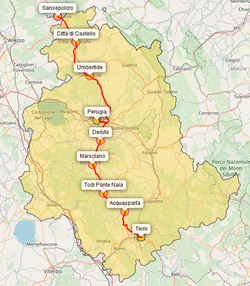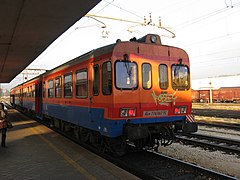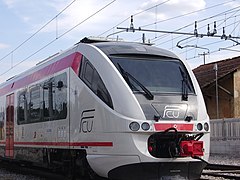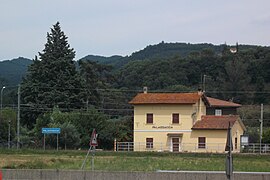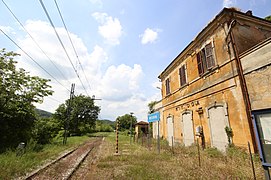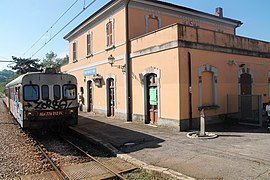Terni–Perugia–Sansepolcro railway
| Terni–Perugia–Sansepolcro railway | |||||||||||||||||||||||||||||||||||||||||||||||||||||||||||||||||||||||||||||||||||||||||||||||||||||||||||||||||||||||||||||||||||||||||||||||||||||||||||||||||||||||||||||||||||||||||||||||||||||||||||||||||||||||||||||||||||||||||||||||||||||||||||||||||||||||||||||||||||||||||||||||||||||||||||||||||||||||||||||||||||||||||||||||||||||||||||||||||||||||||||||||||||||||||||||||||||||||||||||||||||||||||||||||||||||||||||||||||||||||||||||||||||||||||||||||||||||||||||||||||||||||||||||||||||||||||||||||||||||||||||||||||||||||||||||||||||||||||||
|---|---|---|---|---|---|---|---|---|---|---|---|---|---|---|---|---|---|---|---|---|---|---|---|---|---|---|---|---|---|---|---|---|---|---|---|---|---|---|---|---|---|---|---|---|---|---|---|---|---|---|---|---|---|---|---|---|---|---|---|---|---|---|---|---|---|---|---|---|---|---|---|---|---|---|---|---|---|---|---|---|---|---|---|---|---|---|---|---|---|---|---|---|---|---|---|---|---|---|---|---|---|---|---|---|---|---|---|---|---|---|---|---|---|---|---|---|---|---|---|---|---|---|---|---|---|---|---|---|---|---|---|---|---|---|---|---|---|---|---|---|---|---|---|---|---|---|---|---|---|---|---|---|---|---|---|---|---|---|---|---|---|---|---|---|---|---|---|---|---|---|---|---|---|---|---|---|---|---|---|---|---|---|---|---|---|---|---|---|---|---|---|---|---|---|---|---|---|---|---|---|---|---|---|---|---|---|---|---|---|---|---|---|---|---|---|---|---|---|---|---|---|---|---|---|---|---|---|---|---|---|---|---|---|---|---|---|---|---|---|---|---|---|---|---|---|---|---|---|---|---|---|---|---|---|---|---|---|---|---|---|---|---|---|---|---|---|---|---|---|---|---|---|---|---|---|---|---|---|---|---|---|---|---|---|---|---|---|---|---|---|---|---|---|---|---|---|---|---|---|---|---|---|---|---|---|---|---|---|---|---|---|---|---|---|---|---|---|---|---|---|---|---|---|---|---|---|---|---|---|---|---|---|---|---|---|---|---|---|---|---|---|---|---|---|---|---|---|---|---|---|---|---|---|---|---|---|---|---|---|---|---|---|---|---|---|---|---|---|---|---|---|---|---|---|---|---|---|---|---|---|---|---|---|---|---|---|---|---|---|---|---|---|---|---|---|---|---|---|---|---|---|---|---|---|---|---|---|---|---|---|---|---|---|---|---|---|---|---|---|---|---|---|---|---|---|---|---|---|---|---|---|---|---|---|---|---|---|---|---|---|---|---|---|---|---|---|---|---|---|---|---|---|---|---|---|---|---|---|---|---|---|---|---|---|---|---|---|---|---|---|---|---|---|---|---|---|---|---|---|---|---|---|---|---|---|---|---|---|---|---|---|---|---|---|---|---|---|---|---|---|---|---|---|---|---|---|---|---|---|---|---|---|---|---|---|---|---|---|---|---|---|---|---|---|---|---|---|---|---|---|---|---|---|---|---|---|---|---|---|---|---|---|---|---|---|---|---|---|---|---|---|---|---|---|---|
 | |||||||||||||||||||||||||||||||||||||||||||||||||||||||||||||||||||||||||||||||||||||||||||||||||||||||||||||||||||||||||||||||||||||||||||||||||||||||||||||||||||||||||||||||||||||||||||||||||||||||||||||||||||||||||||||||||||||||||||||||||||||||||||||||||||||||||||||||||||||||||||||||||||||||||||||||||||||||||||||||||||||||||||||||||||||||||||||||||||||||||||||||||||||||||||||||||||||||||||||||||||||||||||||||||||||||||||||||||||||||||||||||||||||||||||||||||||||||||||||||||||||||||||||||||||||||||||||||||||||||||||||||||||||||||||||||||||||||||||
| Overview | |||||||||||||||||||||||||||||||||||||||||||||||||||||||||||||||||||||||||||||||||||||||||||||||||||||||||||||||||||||||||||||||||||||||||||||||||||||||||||||||||||||||||||||||||||||||||||||||||||||||||||||||||||||||||||||||||||||||||||||||||||||||||||||||||||||||||||||||||||||||||||||||||||||||||||||||||||||||||||||||||||||||||||||||||||||||||||||||||||||||||||||||||||||||||||||||||||||||||||||||||||||||||||||||||||||||||||||||||||||||||||||||||||||||||||||||||||||||||||||||||||||||||||||||||||||||||||||||||||||||||||||||||||||||||||||||||||||||||||
| Native name | Ferrovia Centrale Umbra | ||||||||||||||||||||||||||||||||||||||||||||||||||||||||||||||||||||||||||||||||||||||||||||||||||||||||||||||||||||||||||||||||||||||||||||||||||||||||||||||||||||||||||||||||||||||||||||||||||||||||||||||||||||||||||||||||||||||||||||||||||||||||||||||||||||||||||||||||||||||||||||||||||||||||||||||||||||||||||||||||||||||||||||||||||||||||||||||||||||||||||||||||||||||||||||||||||||||||||||||||||||||||||||||||||||||||||||||||||||||||||||||||||||||||||||||||||||||||||||||||||||||||||||||||||||||||||||||||||||||||||||||||||||||||||||||||||||||||||
| Owner | Rete Ferroviaria Italiana | ||||||||||||||||||||||||||||||||||||||||||||||||||||||||||||||||||||||||||||||||||||||||||||||||||||||||||||||||||||||||||||||||||||||||||||||||||||||||||||||||||||||||||||||||||||||||||||||||||||||||||||||||||||||||||||||||||||||||||||||||||||||||||||||||||||||||||||||||||||||||||||||||||||||||||||||||||||||||||||||||||||||||||||||||||||||||||||||||||||||||||||||||||||||||||||||||||||||||||||||||||||||||||||||||||||||||||||||||||||||||||||||||||||||||||||||||||||||||||||||||||||||||||||||||||||||||||||||||||||||||||||||||||||||||||||||||||||||||||
| Service | |||||||||||||||||||||||||||||||||||||||||||||||||||||||||||||||||||||||||||||||||||||||||||||||||||||||||||||||||||||||||||||||||||||||||||||||||||||||||||||||||||||||||||||||||||||||||||||||||||||||||||||||||||||||||||||||||||||||||||||||||||||||||||||||||||||||||||||||||||||||||||||||||||||||||||||||||||||||||||||||||||||||||||||||||||||||||||||||||||||||||||||||||||||||||||||||||||||||||||||||||||||||||||||||||||||||||||||||||||||||||||||||||||||||||||||||||||||||||||||||||||||||||||||||||||||||||||||||||||||||||||||||||||||||||||||||||||||||||||
| Operator(s) | Busitalia | ||||||||||||||||||||||||||||||||||||||||||||||||||||||||||||||||||||||||||||||||||||||||||||||||||||||||||||||||||||||||||||||||||||||||||||||||||||||||||||||||||||||||||||||||||||||||||||||||||||||||||||||||||||||||||||||||||||||||||||||||||||||||||||||||||||||||||||||||||||||||||||||||||||||||||||||||||||||||||||||||||||||||||||||||||||||||||||||||||||||||||||||||||||||||||||||||||||||||||||||||||||||||||||||||||||||||||||||||||||||||||||||||||||||||||||||||||||||||||||||||||||||||||||||||||||||||||||||||||||||||||||||||||||||||||||||||||||||||||
| Ridership | 1,089,420 (2016)[1] | ||||||||||||||||||||||||||||||||||||||||||||||||||||||||||||||||||||||||||||||||||||||||||||||||||||||||||||||||||||||||||||||||||||||||||||||||||||||||||||||||||||||||||||||||||||||||||||||||||||||||||||||||||||||||||||||||||||||||||||||||||||||||||||||||||||||||||||||||||||||||||||||||||||||||||||||||||||||||||||||||||||||||||||||||||||||||||||||||||||||||||||||||||||||||||||||||||||||||||||||||||||||||||||||||||||||||||||||||||||||||||||||||||||||||||||||||||||||||||||||||||||||||||||||||||||||||||||||||||||||||||||||||||||||||||||||||||||||||||
| History | |||||||||||||||||||||||||||||||||||||||||||||||||||||||||||||||||||||||||||||||||||||||||||||||||||||||||||||||||||||||||||||||||||||||||||||||||||||||||||||||||||||||||||||||||||||||||||||||||||||||||||||||||||||||||||||||||||||||||||||||||||||||||||||||||||||||||||||||||||||||||||||||||||||||||||||||||||||||||||||||||||||||||||||||||||||||||||||||||||||||||||||||||||||||||||||||||||||||||||||||||||||||||||||||||||||||||||||||||||||||||||||||||||||||||||||||||||||||||||||||||||||||||||||||||||||||||||||||||||||||||||||||||||||||||||||||||||||||||||
| Opened | 12 July 1915 | ||||||||||||||||||||||||||||||||||||||||||||||||||||||||||||||||||||||||||||||||||||||||||||||||||||||||||||||||||||||||||||||||||||||||||||||||||||||||||||||||||||||||||||||||||||||||||||||||||||||||||||||||||||||||||||||||||||||||||||||||||||||||||||||||||||||||||||||||||||||||||||||||||||||||||||||||||||||||||||||||||||||||||||||||||||||||||||||||||||||||||||||||||||||||||||||||||||||||||||||||||||||||||||||||||||||||||||||||||||||||||||||||||||||||||||||||||||||||||||||||||||||||||||||||||||||||||||||||||||||||||||||||||||||||||||||||||||||||||
| Technical | |||||||||||||||||||||||||||||||||||||||||||||||||||||||||||||||||||||||||||||||||||||||||||||||||||||||||||||||||||||||||||||||||||||||||||||||||||||||||||||||||||||||||||||||||||||||||||||||||||||||||||||||||||||||||||||||||||||||||||||||||||||||||||||||||||||||||||||||||||||||||||||||||||||||||||||||||||||||||||||||||||||||||||||||||||||||||||||||||||||||||||||||||||||||||||||||||||||||||||||||||||||||||||||||||||||||||||||||||||||||||||||||||||||||||||||||||||||||||||||||||||||||||||||||||||||||||||||||||||||||||||||||||||||||||||||||||||||||||||
| Line length | 147 km (91 mi) | ||||||||||||||||||||||||||||||||||||||||||||||||||||||||||||||||||||||||||||||||||||||||||||||||||||||||||||||||||||||||||||||||||||||||||||||||||||||||||||||||||||||||||||||||||||||||||||||||||||||||||||||||||||||||||||||||||||||||||||||||||||||||||||||||||||||||||||||||||||||||||||||||||||||||||||||||||||||||||||||||||||||||||||||||||||||||||||||||||||||||||||||||||||||||||||||||||||||||||||||||||||||||||||||||||||||||||||||||||||||||||||||||||||||||||||||||||||||||||||||||||||||||||||||||||||||||||||||||||||||||||||||||||||||||||||||||||||||||||
| Track gauge | 1,435 mm (4 ft 8+1⁄2 in) standard gauge | ||||||||||||||||||||||||||||||||||||||||||||||||||||||||||||||||||||||||||||||||||||||||||||||||||||||||||||||||||||||||||||||||||||||||||||||||||||||||||||||||||||||||||||||||||||||||||||||||||||||||||||||||||||||||||||||||||||||||||||||||||||||||||||||||||||||||||||||||||||||||||||||||||||||||||||||||||||||||||||||||||||||||||||||||||||||||||||||||||||||||||||||||||||||||||||||||||||||||||||||||||||||||||||||||||||||||||||||||||||||||||||||||||||||||||||||||||||||||||||||||||||||||||||||||||||||||||||||||||||||||||||||||||||||||||||||||||||||||||
| |||||||||||||||||||||||||||||||||||||||||||||||||||||||||||||||||||||||||||||||||||||||||||||||||||||||||||||||||||||||||||||||||||||||||||||||||||||||||||||||||||||||||||||||||||||||||||||||||||||||||||||||||||||||||||||||||||||||||||||||||||||||||||||||||||||||||||||||||||||||||||||||||||||||||||||||||||||||||||||||||||||||||||||||||||||||||||||||||||||||||||||||||||||||||||||||||||||||||||||||||||||||||||||||||||||||||||||||||||||||||||||||||||||||||||||||||||||||||||||||||||||||||||||||||||||||||||||||||||||||||||||||||||||||||||||||||||||||||||
Terni–Perugia–Sansepolcro railway is a railway line in Umbria, Italy. It was built by the Ferrovia Centrale Umbra (Central Umbrian Railway Company, FCU) The line, about 147 kilometres (91 mi) in length,[3] connects Terni in southern Umbria with Sansepolcro, Tuscany,[4] with stops in Todi, Perugia, Umbertide and Città di Castello.[5] It is operated by Busitalia Sita Nord, a subsidiary of the Ferrovie dello Stato Italiane group.[6]
History
[edit]The line was inaugurated on 12 July 1915.[7] It was partially destroyed during World War II, and gradually reopened between October 1944 and May 1953.[8] Passenger numbers peaked at 3,001,900 in 1975.[8] In the late 1970s, due to its poor financial results and the risk of closure, the railway was taken over by the Province of Perugia.[9]
In 2000, the rail operator was reorganized into a company owned by the regional government,[10] and in December 2010 it was subsumed into a holding company gathering all the regional public transport services.[10] In 2009, the company employed 211 people.[10] In the late 2000s, the company depended on public subsidies for 71% to 87% of its operating income.[10] In December 2005, a service linking Sansepolcro to Roma Termini station was launched.[11] In April 2013 a train came off the rails near Umbertide, injuring 23 passengers.[12] The regional public transport holding, Umbria Mobilità, was sold to Busitalia in 2014.[13]
All passenger services were cancelled in September 2017 and partially restored in October 2018;[14] they now operate on a 54 kilometres (34 mi) section between Città di Castello and Perugia Ponte San Giovanni.[15]
Infrastructure
[edit]The main line has a maximum grade of 2%, reaching 6% on the branch between Perugia Sant'Anna and Perugia Ponte San Giovanni.[16] The minimum curve radius is 300 m (980 ft) on the main line, and 250 m (820 ft) between Perugia Sant'Anna and Perugia Ponte San Giovanni.[17]
The speed limit on the line was originally set at 90 km/h (56 mph),[18] with an average travel speed of 64 km/h (40 mph).[16] Due to the poor state of maintenance of the tracks and regulatory changes after the Andria–Corato train collision in 2016, the limit was lowered to 70 km/h (43 mph) in October 2016, and further reduced to a maximum speed of 50 km/h (31 mph) in October 2018.[19]
Stations north of Perugia, such as the ones in Umbertide and Città di Castello, tend to be close to the city center, while south of Perugia (such as in Marsciano and Todi) they are generally more remote.[17]
Passenger services
[edit]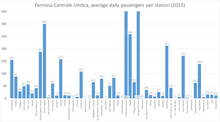
According to a 2013 survey, 25.9% of trains ran with fewer than 30 people on board, reaching 71.6% between Sansepolcro and Città di Castello.[20] The busiest segment is the line between Ponte San Giovanni and Perugia Sant'Anna with an average of 2,400 passengers per day.[20] Several stations and stops recorded an average of zero passengers per day.[20]
Rolling stock
[edit]As of 2014 the rolling stock was made up of 45 diesel-powered ALn 776 and four electric-powered Minuetto trains.[21] The ALn 776 trains were built between 1986 and 1993.[17] The four Minuettos were purchased in 2008.[22] Owing to the high cost of spare parts, as of 2014 three are nonoperational, while one remains in active service.[22]
-
FCU ALn 776-076 in Terni
-
Pinturicchio electric traction train
Routes
[edit]The following stations, stops and halts were served in December 2010,[23] many of them as request stops.[23] As of May 2019, most are inactive; stations currently served by rail are marked with a green diamond (◆).[24]
Gallery
[edit]-
Palazzaccia
-
Monte Corona
-
Perugia Sant'Anna
-
Todi Ponte Rio
References
[edit]Footnotes
[edit]- ^ "Relazione Finanziaria Annuale al 31 Dicembre 2016" (PDF). Busitalia – Sita Nord S.r.l. Retrieved 23 May 2019.
- ^ Railway Atlas 2017, pp. 54, 59, 64.
- ^ "Procedura d'interfaccia. Norme di esercizio particolari della linea Sansepolcro - Perugia P.S. Giovanni - Terni" (PDF). RFI. Retrieved 15 May 2019.
- ^ Whitman, William B. (28 June 1987). "A Whistle-Stop Journey Into Umbria". The New York Times. Archived from the original on 10 November 2017. Retrieved 15 May 2019.
- ^ Jepson, Tim (5 February 2016). "Umbria getting there". The Telegraph. Archived from the original on 8 January 2018. Retrieved 15 May 2019.
- ^ "Busitalia: public transport service in Groningen-Drenthe area awarded to QBuzz". fsitaliane.it. Retrieved 15 May 2019.
- ^ "La storia". Ferrovia Centrale Umbra srl. 6 February 2003. Archived from the original on 6 February 2003. Retrieved 15 May 2019.
- ^ a b "Il treno dei desideri / La Ferrovia Centrale Umbra. Intervista ad Adriano Cioci, studioso e storico delle strade ferrate" (in Italian). Altrapagina. 2013. Archived from the original on 26 January 2018. Retrieved 15 May 2019.
- ^ "Legislatura 17 Atto di Sindacato Ispettivo n° 3-01413". Senato.it. 12 November 2014. Retrieved 23 May 2019.
- ^ a b c d "La Piattaforma Logistica delle Marche" (PDF). ISTAO. pp. 53–60. Retrieved 23 May 2019.
- ^ Vincenti, Vittorio (9 December 2005). "Da Sansepolcro a Roma con la FCU". Ferrovie.it (in Italian). Archived from the original on 7 June 2017. Retrieved 27 May 2019.
- ^ "Umbertide, treno deraglia a Montecastelli: ventitre feriti, nessuno grave". Umbria24.it (in Italian). 9 April 2013. Retrieved 22 May 2019.
- ^ "Umbria mobilità è privata: anche l'ultimo 30% ceduto a Busitalia". Il Messaggero (in Italian). 8 July 2014. Archived from the original on 24 April 2019. Retrieved 23 May 2019.
- ^ "Umbertide e Castello, c'è il treno dei desideri". umbriaON (in Italian). 25 October 2018. Retrieved 15 May 2019.
- ^ "Fcu, si riparte piano: via ai treni (a 50 all'ora) della linea Perugia-Ponte San Giovanni-Città di Castello". PerugiaToday (in Italian). 24 October 2018. Archived from the original on 24 October 2018. Retrieved 23 May 2019.
- ^ a b "Il Piano Tecnologico di RFI" (PDF). Collegio Ingegneri Ferroviari Italiani. 15 October 2018. Retrieved 23 May 2019.
- ^ a b c "Piano regionale dei trasporti 2014-2024". Regione Umbria. 27 January 2016. pp. 100–103. Archived from the original on 27 May 2019. Retrieved 27 May 2019.
- ^ "Ex Fcu, tornano i treni lumaca: limite massimo di 70 km/h. Regione: «Situazione paradossale»". Umbria24.it (in Italian). 20 October 2016. Archived from the original on 26 December 2016. Retrieved 23 May 2019.
- ^ "Fcu, si riparte con il limite a 50 km/h: «Ora verso Sansepolcro e la tratta Perugia-Terni»". Umbria24.it (in Italian). 24 October 2018. Archived from the original on 24 October 2018. Retrieved 15 May 2019.
- ^ a b c "Piano regionale dei trasporti 2014-2024". Regione Umbria. 27 January 2016. pp. 120–122. Archived from the original on 27 May 2019. Retrieved 27 May 2019.
- ^ "Carta della mobilità 2015-2016" (PDF). Umbria Mobilità. Archived (PDF) from the original on 25 August 2016. Retrieved 15 May 2019.
- ^ a b "Perugia, Mancato Utilizzo Locomotori 'pintoricchio', Nota Brutti (Idv)". umbriajournal.com (in Italian). 11 February 2014. Retrieved 23 May 2019.
- ^ a b "Orario dal 12 dicembre 2010" (PDF). FCU. Archived (PDF) from the original on 2011-01-25. Retrieved 26 May 2019.
- ^ "Sansepolcro - Perugia" (PDF). Busitalia. Archived (PDF) from the original on 24 May 2019. Retrieved 26 May 2019.
Sources
[edit]- Atlante ferroviario d'Italia e Slovenia [Railway atlas of Italy and Slovenia]. Schweers + Wall. 2010. ISBN 978-3-89494-129-1.
External links
[edit]- Servizi ferroviari - Busitalia–Sita Nord


